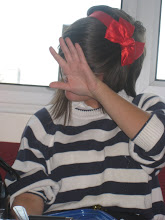Today I had a go at Woodblock printing, a relatively quick process, which I did with type.
It consists of picking a type, getting together all the letters and forming the word/s so its a tight rectangle (inserting plain woodblocks in the gaps to pack it out). Then to tape it all up, which is really fiddly! I found that the best way, was to turn it face-down and tape the bottom up then to tape the sides together and make it nice and tight for print.


Then to ink the letters up with an ink and roller, and then put it in the press, which levers down to just press the paper into contact with the print. It kind of feels as though you don't have much control on the pressure you can put it under to get a crisper print, but not re-inking it gives a 'bitty' effect. I tried this and did it on one sheet to show below... also doing it onto tracing paper gives it a pleasing look.


The image below shows how the ink lessens as it's pressed more and more. I didn't re-ink the blocks .
The Chinese Woodblock.
An early pre-stage of printmaking in China was the use of wooden stamps for reproducingDaoist and Buddhist images. This was done already before the invention of paper in 105 A D. Printmaking then started during the Tang Period (618-907). Similar like by the technique of stone rubbing, which emerged around the 7th century, prints were done by rubbing a paper over an inked woodblock with the help of a brush. Examples of that can be dated already to the second half of the 6th century.
In the 9th century, printmaking was used for various reasons like printing religious texts or illustrated calendars. A huge private printing industry developed.
The Japenese Woodblock.
Woodblock printmaking came to Japan from China probably around the 8th century. At that time the two countries were connected by an intesive cultural exchange. Probably under Chinese consulting, in 770 the print of some of the first known text prints was finished.
-------------
Although I have only done it with type stamps today, I plan to do some proper woodcut next week. It's something that i've never really considered to make any image i have drawn. During a tutorial Nick showed us some of his work and spoke about transferring images to the wood to then cut away at it...http://www.nickcass.com/Index.html
I thought that woodcut was just really lino-print but with wood and not lino. However through what Nick showed us, it seems that you have more control over cutting into wood than you do into lino. You can achieve straighter and more crisp lines.



No comments:
Post a Comment